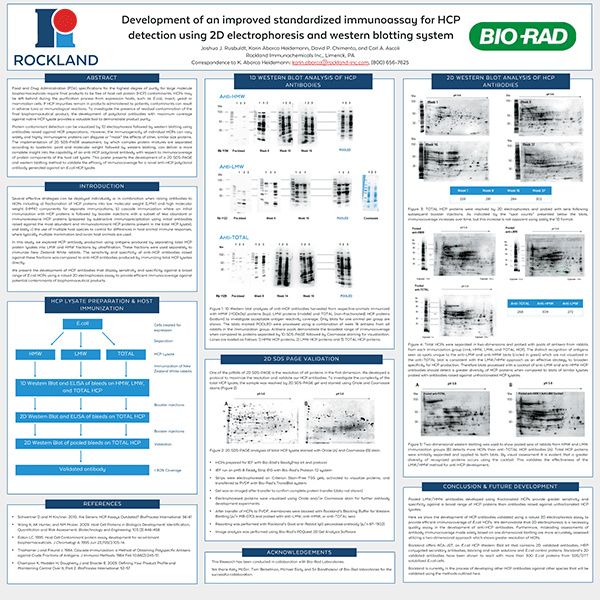Development of an improved standardized immunoassay for HCP detection using 2D electrophoresis and western blotting system
Food and Drug Administration (FDA) specifications for the highest degree of purity for large molecule biopharmaceuticals require final products to be free of host cell protein (HCP) contaminants. HCPs may be left behind during the purification process from expression hosts, such as E.coli, insect, yeast or mammalian cells. If HCP impurities remain in products administered to patients, contaminants can result in adverse toxic or immunological reactions. To investigate the presence of residual contamination of the final biopharmaceutical product, the development of polyclonal antibodies with maximum coverage against native HCP lysate provides a valuable tool to demonstrate product purity.
Protein contaminant detection can be visualized by 1D electrophoresis followed by western blotting using antibodies raised against HCP preparations. However, the immunogenicity of individual HCPs can vary widely and highly immunogenic proteins can disguise or “mask” the effects of other, similar size proteins. The implementation of 2D SDS-PAGE assessment, by which complex protein mixtures are separated according to isoelectric point and molecular weight followed by western blotting, can deliver a more complete insight into the capability of an anti-HCP polyclonal antibody with respect to immunocoverage of protein components of the host cell lysate. This poster presents the development of a 2D SDS-PAGE and western blotting method to validate the efficacy of immunocoverage for a novel anti-HCP polyclonal antibody generated against an E.coli HCP lysate.
